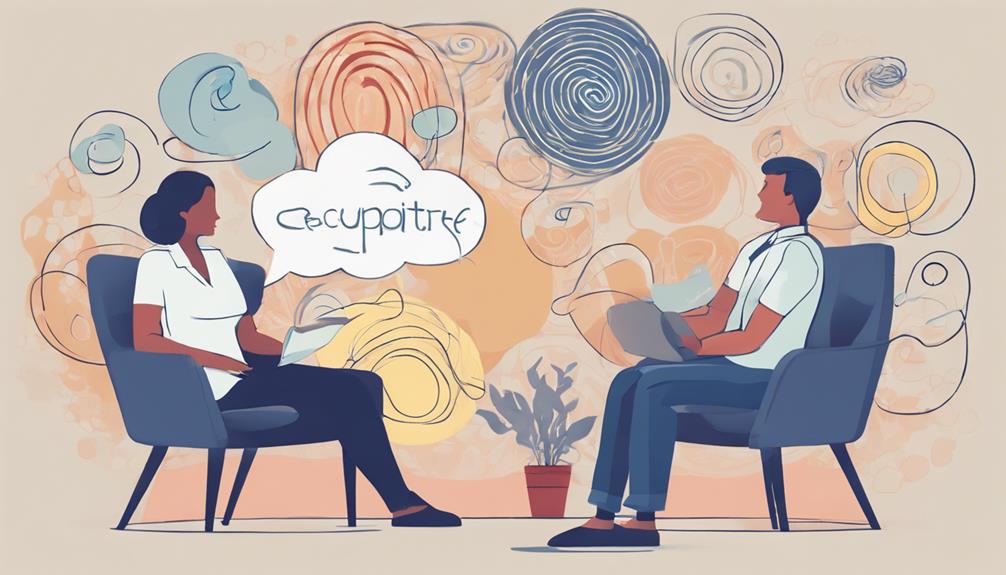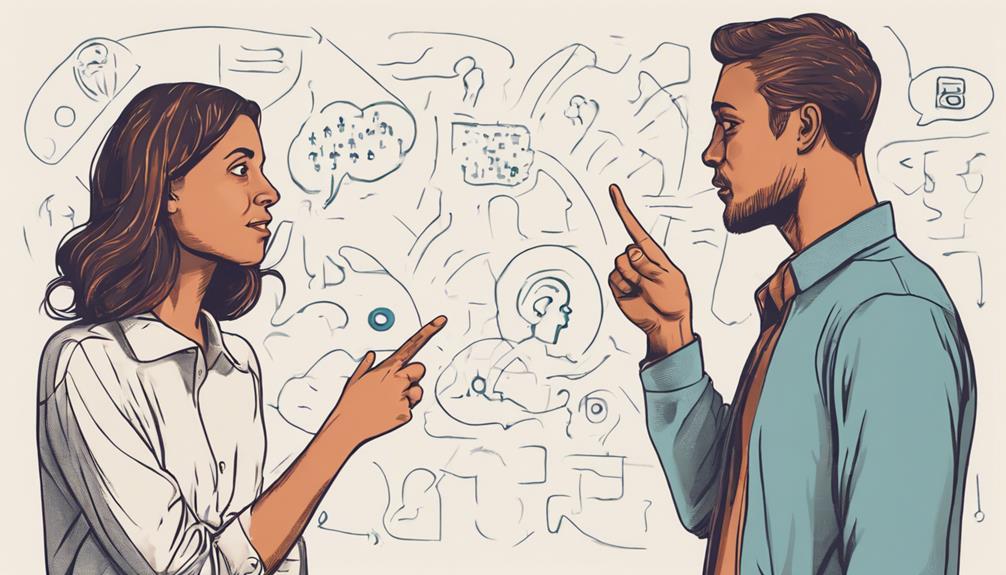The innovative combination of Cognitive Behavioral Therapy (CBT) and Hypnotherapy effectively targets mental health improvements by addressing conscious and subconscious influences. CBT focuses on altering negative thought patterns with structured techniques, while Hypnotherapy utilizes suggestibility in a trance-like state to induce behavioral changes at a subconscious level. Integrating these therapies synergizes their benefits, offering comprehensive treatment that can lead to lasting positive changes. This approach taps into both evidence-based strategies and subconscious influence, making it a promising avenue for enhancing mental well-being.
Understanding CBT and Hypnotherapy

In the realm of mental health interventions, Cognitive Behavioral Therapy (CBT) and Hypnotherapy stand out as evidence-based approaches that offer distinct yet complementary strategies for addressing psychological challenges. CBT techniques focus on identifying and changing negative thought patterns and behaviors to improve mental health outcomes. This therapy is structured, goal-oriented, and typically involves homework assignments to reinforce learning and promote lasting change.
On the other hand, hypnotherapy benefits individuals by utilizing a trance-like state to enhance suggestibility, allowing for the exploration of deep-seated issues and facilitating behavioral change at a subconscious level. This approach can help individuals tap into their inner resources, improve coping mechanisms, and alleviate symptoms related to anxiety, phobias, and trauma.
The integration of CBT techniques and hypnotherapy in mental health treatment offers a comprehensive approach that addresses both conscious and subconscious aspects of psychological well-being. By combining these two evidence-based therapies, individuals can benefit from a synergistic effect that enhances the effectiveness of interventions and promotes holistic healing.
Benefits of Combining Both Therapies
The integration of Cognitive Behavioral Therapy (CBT) techniques and Hypnotherapy in mental health treatment offers a synergistic approach that enhances therapeutic outcomes by addressing both conscious and subconscious aspects of psychological well-being.
By combining the strengths of CBT's evidence-based strategies with the deep subconscious influence of Hypnotherapy, a dual approach benefits individuals by targeting issues from multiple angles.
One of the key benefits of merging CBT and Hypnotherapy is the synergy in treatment. While CBT focuses on identifying and changing negative thought patterns and behaviors, Hypnotherapy delves into the subconscious mind to uncover underlying beliefs and emotions.
This combined approach allows for a more comprehensive understanding and resolution of mental health issues. Furthermore, the utilization of both therapies can lead to more profound and lasting changes in individuals by promoting cognitive restructuring alongside subconscious reprogramming.
Techniques for Health Hypnosis

Utilizing a variety of specialized techniques, health hypnosis aims to tap into the subconscious mind to promote positive behavioral changes and enhance overall well-being.
Hypnosis techniques used in health hypnotherapy often involve inducing a state of deep relaxation and heightened focus, allowing individuals to be more receptive to suggestions that can help address various mental health concerns. These techniques may include progressive muscle relaxation, guided imagery, and visualization exercises tailored to the individual's specific needs.
The mental health benefits of these hypnosis techniques are well-documented. By accessing the subconscious mind, individuals can work through deep-seated issues, alleviate symptoms of anxiety and depression, manage stress more effectively, and cultivate a more positive outlook on life.
Furthermore, health hypnosis can empower individuals to develop healthier habits, improve self-esteem, and enhance their overall quality of life.
Integrating CBT Strategies Into Hypnotherapy
Integrating cognitive-behavioral therapy (CBT) strategies into hypnotherapy enhances the effectiveness of treatment by addressing both conscious thoughts and subconscious patterns simultaneously. CBT techniques, widely recognized for their efficacy in treating various mental health conditions, focus on identifying and modifying negative thought patterns and behaviors.
When combined with hypnosis, which leverages the power of suggestion to access the subconscious mind, a synergistic effect is created.
CBT techniques integrated into hypnotherapy sessions can help individuals challenge and reframe negative beliefs at a deeper level, as the relaxed state induced by hypnosis allows for increased receptivity to new perspectives and suggestions. By incorporating CBT strategies during hypnosis, individuals can experience profound shifts in their thought patterns and behaviors more efficiently than with either approach alone.
Moreover, hypnosis benefits from CBT techniques by providing a structured framework for addressing specific issues and promoting lasting positive changes in mental health and well-being.
Case Studies and Success Stories

Several compelling case studies showcase the effectiveness of integrating CBT strategies into hypnotherapy for improving mental health outcomes. Patient testimonials consistently highlight the positive impact of this integrated approach on their well-being.
For instance, a patient struggling with severe anxiety reported significant relief after undergoing sessions that combined CBT techniques with hypnotherapy, emphasizing the deep sense of calm and control they experienced.
Therapist insights gleaned from these case studies reveal that the combination of CBT and hypnotherapy can lead to profound clinical outcomes. Therapists note that this integrated approach allows for a comprehensive exploration of underlying issues while fostering personal growth in patients.
Frequently Asked Questions
Can I Undergo Hypnotherapy if I Can't Be Hypnotized Easily?
Hypnotherapy, despite misconceptions, offers alternative techniques for those who struggle with being easily hypnotized. Skilled therapists can work with individuals to overcome resistance, tailoring approaches to enhance the effectiveness of treatment strategies in mental health interventions.
Is It Possible to Combine CBT and Hypnotherapy for Children?
Hypnotherapy can be beneficial for children, although age limitations exist due to varying levels of suggestibility. Research supports childhood hypnotherapy benefits for issues like anxiety and pain management. Combining CBT with hypnotherapy may offer a holistic approach to treatment.
Are There Any Risks or Side Effects Associated With Hypnotherapy?
Hypnotherapy, like any therapeutic intervention, may pose potential dangers and adverse effects. These can include false memories, heightened suggestibility, and emotional distress. It's crucial for practitioners to assess risks and benefits thoroughly.
How Long Does It Take to See Results From Combining CBT and Hypnotherapy?
The progress timeline for integrating CBT and hypnotherapy varies among individuals, typically showing initial improvements within a few sessions. Patient expectations should align with gradual but steady progress. Therapists require specific training in both modalities to effectively combine them for optimal results.
Can I Continue With Other Forms of Therapy While Undergoing CBT and Hypnotherapy?
When considering continuing other therapy alongside CBT and hypnotherapy, it is essential to assess potential benefits of integration, such as increased support and diverse perspectives, while also acknowledging potential challenges like conflicting therapeutic approaches or goals.
Conclusion
In conclusion, the combination of Cognitive Behavioral Therapy (CBT) and Hypnotherapy has shown promising results in improving mental health outcomes.
By integrating CBT strategies into hypnotherapy sessions, individuals can benefit from a holistic approach that addresses both cognitive and subconscious factors contributing to their mental health issues.
Case studies and success stories further support the effectiveness of this integrated therapeutic approach in promoting positive changes in individuals' mental well-being.










































